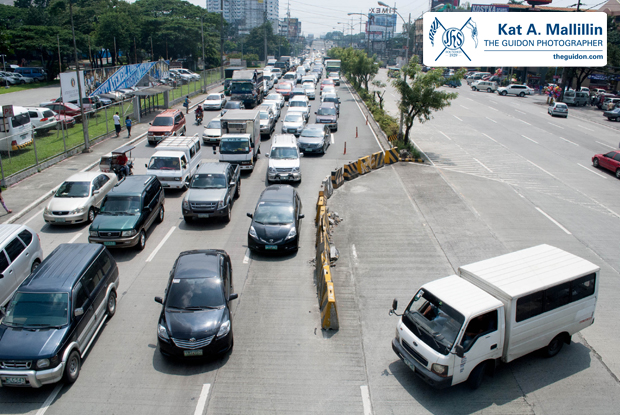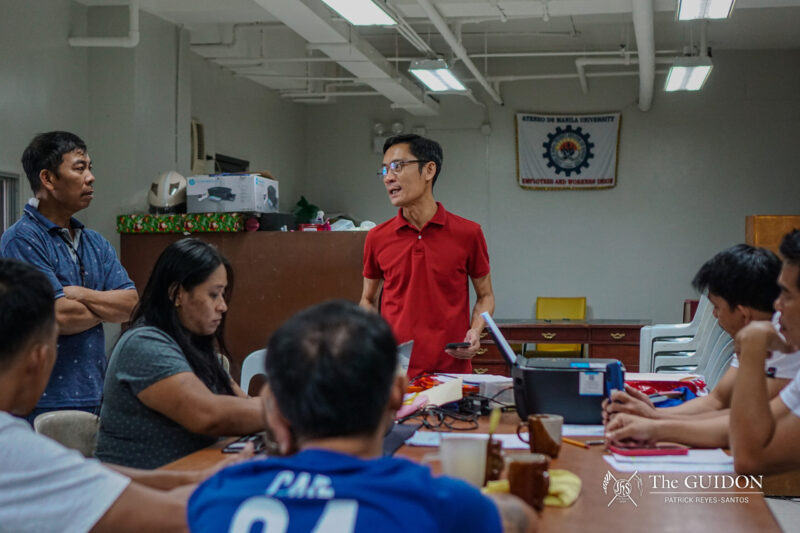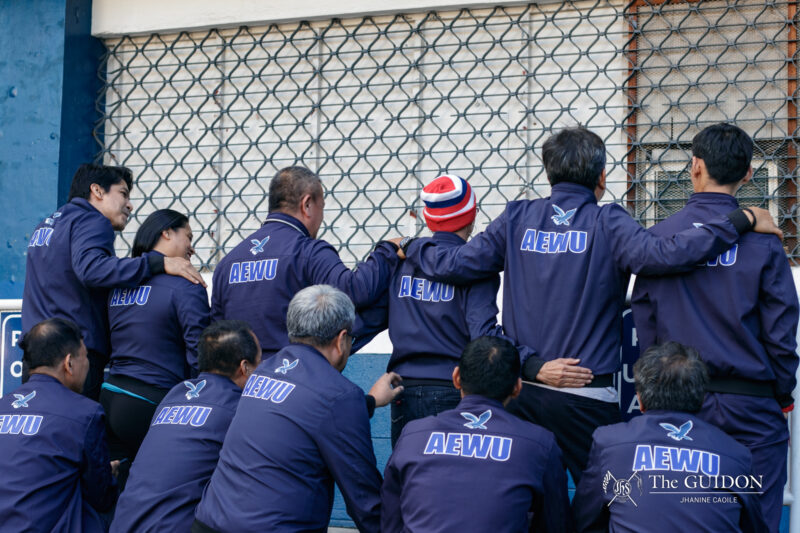
QUEUEING PROBLEMS. The Ateneo Traffic Group observed that the line of cars entering Gate 1 can reach as far as McDonald’s Katipunan. Photo by Kat A. Mallillin.
THE ATENEO Traffic Group (ATG) promised better mobility in the Ateneo within the targeted three-year implementation of its recommendations.
According to Facilities Management Office (FMO) Director Jose Arnulfo Batac, the traffic research group had been doing studies and research that resulted in the recommendations they forwarded to the university board.
These recommendations have been the framework of the group’s three main proposals, the implementation of which started with the construction of sidewalks around campus.
The first proposal provides a safe and clean environment conducive to study, work and play. The second one is to create efficient mobility systems. The last one proposes to integrate the mobility system in education and formation programs that would involve trainings and seminars.
Batac stressed that the proposals were not limited to the enforcers, but would extend to the students as well.
University President Fr. Jose Ramon Villarin, SJ convened the ATG last January and tasked it to review the current mobility system, to propose and recommend changes and to evaluate proposals of the Metro Manila Development Authority (MMDA).
Aside from Batac, the group is composed of Edna Franco, Assistant to the President for Organization Development, Abigail Favis, Environmental Science instructor, Czarina Saloma-Akpedonu, sociology associate professor, and Kardi Teknomo, information systems and computer sciences associate professor.
Bridging gaps
According to Batac, one of the aims of ATG is to connect university buildings through complete and passable walkways, including the improvement of the pavements, lighting and signages around campus. This phase’s target completion is by the end of November.
“That will somehow improve walkability of the campus,” he said.
Favis said that as ATG rolls out its plans for the traffic system in the next few years, it also aims to change the outlook of students and their attitudes in relation to mobility.
The group also proposed that traffic management inside the Ateneo be under a single entity to be able to avoid clashing implementations of the traffic regulations.
“There are still areas where there are gaps. So one of the things that we strongly recommend is that there will be one person who will call the shots and probably lay out the system,” said Franco.
“We’re hoping that there will be more opportunities to share the results of our study; whoever is interested to hear it, we would be happy to share it,” said Franco.
Work in progress
The group employed the traffic scheme in the grade school first, following the computations acquired through the study done by the traffic research group.
“The queue length of cars from our gate in the morning can reach to around 300 cars for grade school, extending from Gate 1 all the way to McDonald’s on the other side of Katipunan,” said Batac.
“Our observation is that around 80% of the total car volume in grade school would enter Gate 1 going into the inner driveway. So, ideally, the volume should be distributed in Gates 1 and 2.”
Batac mentioned the policy that was implemented in the grade school: Cars for Prep to Grade 3 are required to use Gate 1 and the inner driveway, while cars for Grade 4 and up will have to use Gate 2 and the outer driveway.
This automatically divides the volume of vehicles by 50%. Batac explained that this improved the flow of traffic during the morning peak.
As observed by the group and the community, the cars entering the campus to go to the Ateneo Grade School have greatly decreased in volume and in concentration.
“That is exactly the reason why we have to prioritize grade school because there is also that general perception that traffic is really contributed by grade school alone so it was also a good opportunity for us to show that something can be done and it turned out well,” he added.
The group’s proposals will be implemented gradually and the next dry run of the one-way system to be implemented inside campus is currently being decided on.
Community cooperation
The ATG recognizes the involvement of the community through its feedback.
“In general, we do get regular feedback from parents especially when there was an announcement that ATG was formed. There are so many inputs coming into ATG, some in the form of complaints, some in the form of suggestions on how to solve the problem. And I think all those information were also utilized by ATG in crafting the recommendations,” said Franco.
Favis added that each e-mail sent to the group is sent to the members as well. These suggestions are compiled and discussed during their meetings.
“Most of the suggestions actually came all together. It became valuable information for us,” she explained. “[But] of course we haven’t rolled out any major project yet, but we do value the feedback that we get from the community,” she explained.
Franco noted that suggestions that are proactive in nature are usually forwarded to the traffic group for perusal. She also said that the Sanggunian also helps disseminate information to students.







